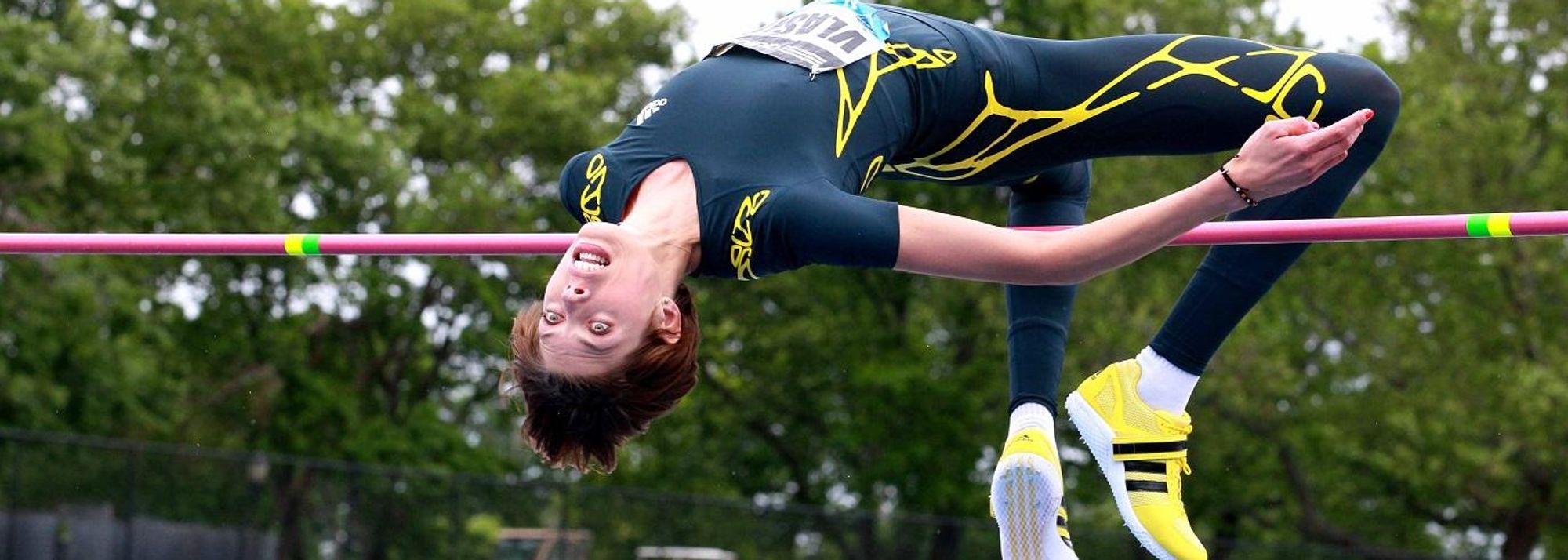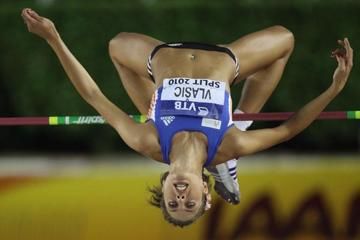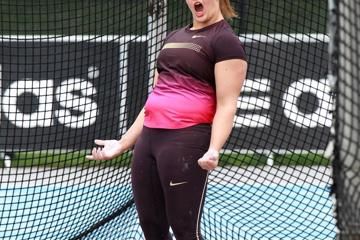Blanka Vlasic at the 2013 adidas Grand Prix in New York (© Victah Sailer)
All Blanka Vlasic wanted to do was jump. It was what she had done nearly every day for 13 straight years. Jumping was all she knew. It was what she did best.
There was a time when the only questions about Vlasic’s ability to jump were how high would she go, and who would she beat along the way?
However, that was before surgery and a subsequent bacterial infection threatened a premature end to her storied career and left the 2010 IAAF World Athlete of the Year and two-time World champion, both indoors and outdoors, asking all of the questions.
Why are there are so many complications?
Why is the bone healing so slowly?
Will my left foot and right foot ever feel the same again?
Will I ever be able to compete again?
“There were so many questions, they were like bugs in my head,” said Vlasic. “And when you don’t get answers, you go searching for them and that can take you to some pretty dark places.”
As she has tended to do, Vlasic followed her troubles into the dark recesses of her mind. But, unlike some past journeys, she has emerged without all of the answers and seemingly with a renewed psyche.
The Vlasic who competed at the Diamond League adidas Grand Prix, winning in her first competition since 16 September, 2011, was unburdened by expectations, disinterested in bar measurements, and genuinely happy just to be able to back at the sport she loves.
“I don’t dare to expect anything at this moment,” she said. “The beginning of the season is a little tricky, especially after 20 months of not competing. It would just be ungrateful for me to expect something special or to put myself under pressure now. I decided that when I came back, I was just going to be happy that I made it back. I need to keep that promise.”
It is understandable that Vlasic is flooded with a sense of relief after the ordeal that she endured. Sixteen months ago, a fragment of bone in her left ankle broke off and embedded into her Achilles tendon, requiring surgery on 30 January, 2012, to shave off part of the tendon on her takeoff foot.
One morning, the following April, she woke up to find her foot completely swollen and experiencing a pain, “Unlike anything I had ever felt before.”
She soon learned that one of the stitches on her ankle did not close and the opening had become infected, requiring another procedure and three months of antibiotics to clear up the additional problem.
Also eradicated was any chance of her competing at her third Olympics in London last summer.
“I’ve gone to some dark places before, but this was the worst because I was forced to live a life that wasn’t used to,” Vlasic said. “For a couple of days, I was in really bad shape.”
Unlike some other points in her career, notably during her struggles early in 2010 when she admits that she allowed those emotions to drag her to precipice of a breakdown, this time Vlasic let it all go.
“I don’t know what kept me going,” reflected Vlasic. “Call it crazy faith, crazy motivation, a blind belief that there was still something out there for me in this world of high jumping.
“I just knew in my heart that I was not done, I was not finished. Even on the days when I didn’t want to get out of bed, I would get myself together and get myself to training to do whatever I could, no matter how little.”
Unable to run or jump, Vlasic continued to work on her fitness, her core strength, and her power, but the process to get back into actually jumping was tedious.
“It was like the longest preparations of my life, the longest training camp at home,” she said. “There were so many moments when we needed to go back, take some time off, because we had hit the wall and could go no further. Like the first time I put my spikes on we saw it was still too painful to jump in them, so we had to go back and jump in training shoes with a shorter approach. It was a constant forward, backwards, forward, backwards. I’m happy that I didn’t lose my mind.”
Meanwhile, many of her doubts and questions remained unanswered, at least until September, when a doctor in her hometown of Split was able to tell her in detail why her recovery was so prolonged. They began a course of therapy that steadily began to bring her back to form.
Not being able to compete during the indoor season was a blow but, given everything she had gone through, Vlasic took it in stride.
“Of course I had questions like why me, but why not me,” Vlasic said. “In the end you realize that everything that happens to you happens for a reason. God knows why this is good for me.
"Who am I to complain when there are so many terrible things going on in the world? I was in my beautiful home town. I wasn’t hungry. I wasn’t cold. I was just injured.”
During last autumn, Vlasic was able to return to jumping, with the help of a custom-made spike by her sponsor adidas. It wasn’t anything special. It began with a four-step approach, but then graduated to six steps and then eight steps. Now, she is back to a full approach.
“My coach says that I have a good memory,” she said. “I haven’t forgotten how to jump.”
Vlasic now appears to be a changed athlete after having gone through these difficult times.
For one, she says her days of going to meets and voicing her expectation to jump two metres , a height she has cleared no less than 157 times in her career, the second most prolific statistic behind the 195 clearances made by the Bulgarian World record holder Stefka Konstadinova, are over.
She isn’t putting a timetable on getting back over a bar that high, for the first time in her career she is managing expectations.
“I believe that big heights are going to come again and that I will be able to jump as high as have in the past, I just don’t know when that is going to be. Right now, whatever comes is a bonus.”
Vlasic said this experience has put her feet back on the ground.
“I have greater appreciation for every moment I was able to do the job that I love and didn’t have to think about pain,” she said. “Those were happy times when I could just slip into my party shoes after a good competition, have fun, wake up the next morning and get on a plane to go home without worrying about getting my foot in a bucket of ice or when my next therapy session is. I have been living with pain for much too long now
“I think I have learned a lot. I’m more mature. I’m more down to earth now. The most important thing is putting into my head that I have nothing to lose.”
“My competitive spirit hasn’t died, but I am learning to be patient, which is not easy for me. But then I think about where I was a year ago and I am happy again.”
Joe Battaglia for the IAAF







